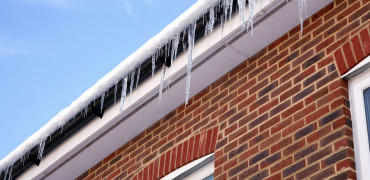You may have missed the E.ON advertisement for heat pumps currently playing on TV, but thousands and thousands of potential customers will have seen it, so are you ready to capitalise on increased awareness and growing interest in renewable heating?
The advert is very glossy and stylised but it does convey the fact that the heat pump gets heat from the outdoor air.
It’s quite ‘continental’ in its feel, with the city streets turned into swimming pools, which is a little different to Britain in winter, so just how will this help convince UK consumers that the technology works when there’s frost on the ground and ice on the windscreen?
How a heat pumps works in the cold is a question that plumbers and heating engineers are likely to have to answer more and more as awareness amongst the public increases.
So I thought it might be worthwhile taking a quick look at the basics of how the technology works, to help ensure that you are armed with the right answers the next time you have to explain how this technology can heat a home, even if outdoor temperatures drop to -15ºC or even -20ºC.
Everyone already uses a heat pump. They just don’t know it.
You’ve already got one
If any of your customers ask about this ‘new’ technology called a heat pump, it’s worth pointing out that just about everyone in the country is currently using one right now. They just don’t know it as a heat pump.
It’s called a refrigerator and it sits in your kitchen, quietly and reliably working away to keep your food cold and fresh.
An air source heat pump uses the same basic technology as a fridge, but in reverse.
In our kitchens, the fridge takes heat from the contents inside and rejects it out the back.
It uses what is known as the ‘vapour compression cycle’, which utilises the different boiling points of refrigerant gases, to transfer heat when the vapour is compressed. In this way, the fridge extracts heat from the food and transfers it away from the interior.
An air source heat pump does exactly that. It harvests ‘free’ heat energy from the outdoor air – which is renewed every day by the sun.
Using the lower boiling temperatures of different refrigerant gases, the heat pump can take a few degrees of heat from the air – even when it’s freezing outside, and upgrade it using the same vapour compression cycle.
It upgrades this heat energy to deliver all the heating and hot water the home needs, and it will do this, day in, day out, 365 days a year, working quietly and reliably in the background – just like your fridge.
The market is changing
As a manufacturer, we’ve been making heat pumps in the UK for over a decade now and we’ve slowly seen interest grow as more and more people accept the fact that gas and oil heating are no longer sustainable ways of heating our homes.
The government has also recognised this and has pointed to heat pump sales of over a million a year by 2030, so the tide is turning and forward-thinking heating engineers have already added heat pumps to their sales offering, so that they can satisfy this growing demand for renewable and sustainable heating.
The recent price rises in oil and gas are also helping convince consumers that the long term answer is no longer a gas or oil boiler.
We also need to seriously reduce the UK’s carbon emissions to meet legally binding targets which will simply not be possible if we continue using ‘traditional’ heating.
Add to this the nation’s reliance on imported gas and oil from unstable regions such as the middle east and Russia and it’s easy to see where the future lies.
An evolution not a revolution
When gas was first introduced in the UK, it took many years for it to become the mainstream way of heating our homes but now, there are few who question its use.
In the same way, heat pumps are steadily growing in market share especially as homeowners realise that they can fund virtually all their capital costs by receiving 7 years of payments from the Renewable Heat Incentive – as well as getting lower monthly energy bills.
Awareness of mankind’s impact on the planet is also fuelling this drive as more people question how we can enjoy modern levels of comfort, without ‘costing the earth’.
We’re already seeing this with cars as interest in electric or hybrid vehicles increases. As we also get more of our grid electricity from renewable sources, the case for electric heat pumps becomes even stronger.
What can you do next?
So, if you are a plumber or heating engineer who has stayed away from heat pumps until now, what’s the next step?
Well we’ve got some quick videos that will help increase your understanding and which you are welcome to point customers to as well.
These show the basics of how the technology works and also answer the FAQs for heat pumps.
The next step would be to book yourself of one of our Ecodan training courses so that you can answer more than just the basics and can turn this increased awareness amongst the public into your next job.
Max Halliwell is Product Manager for Mitsubishi Electric's range of renewable heating systems.



